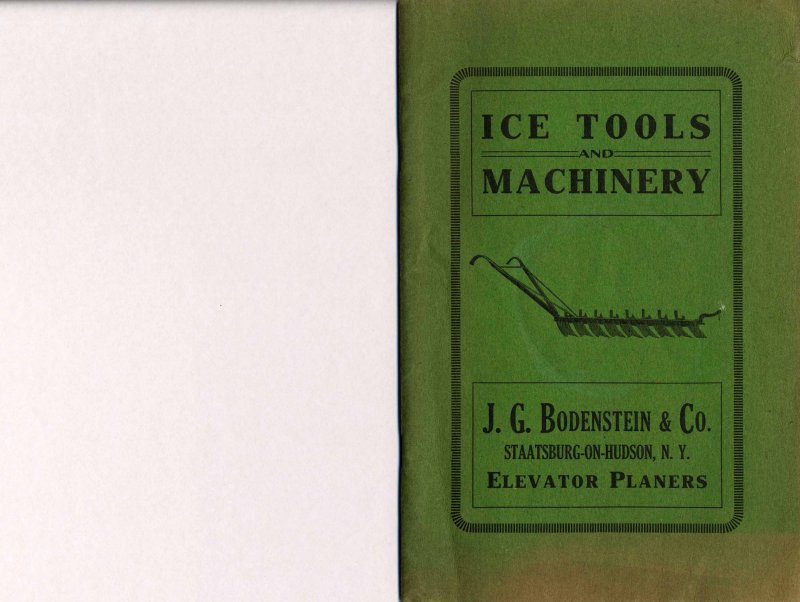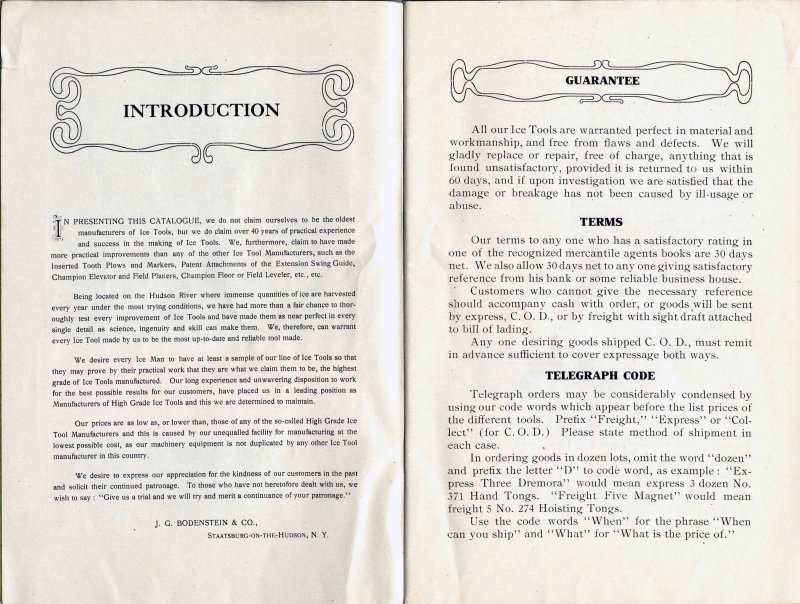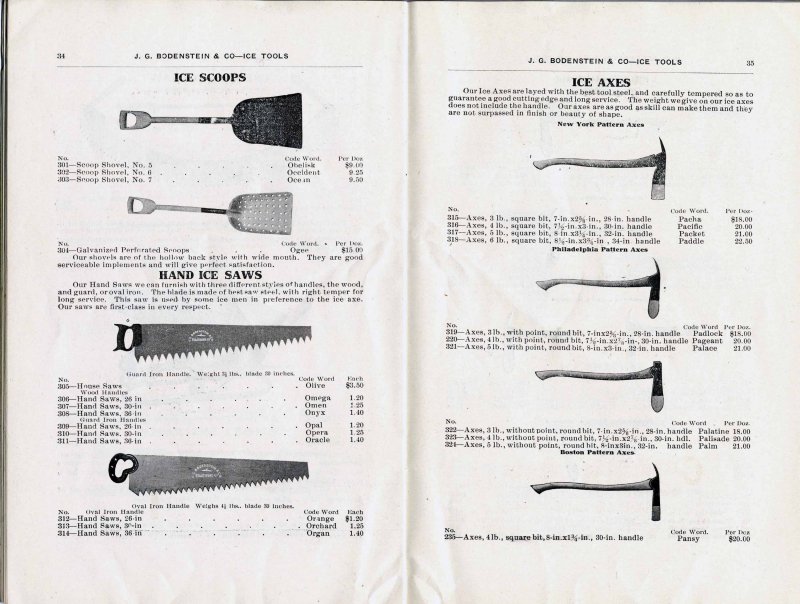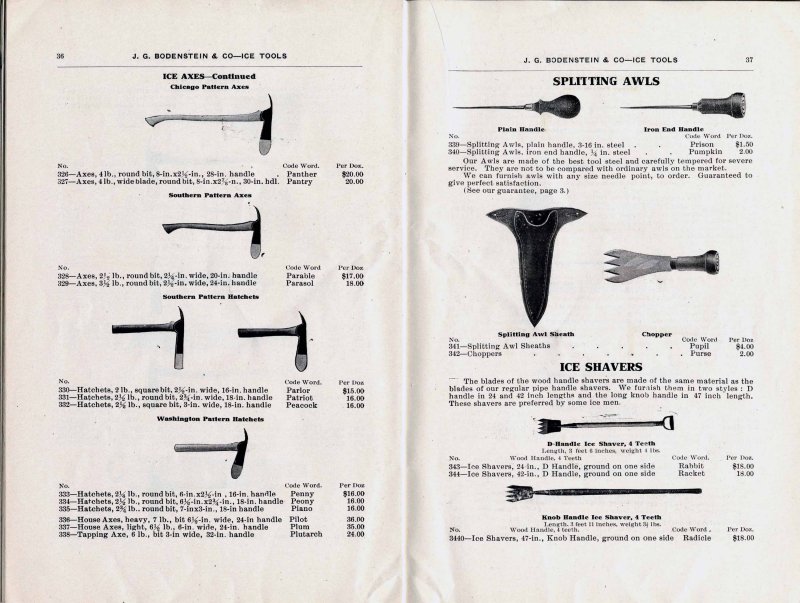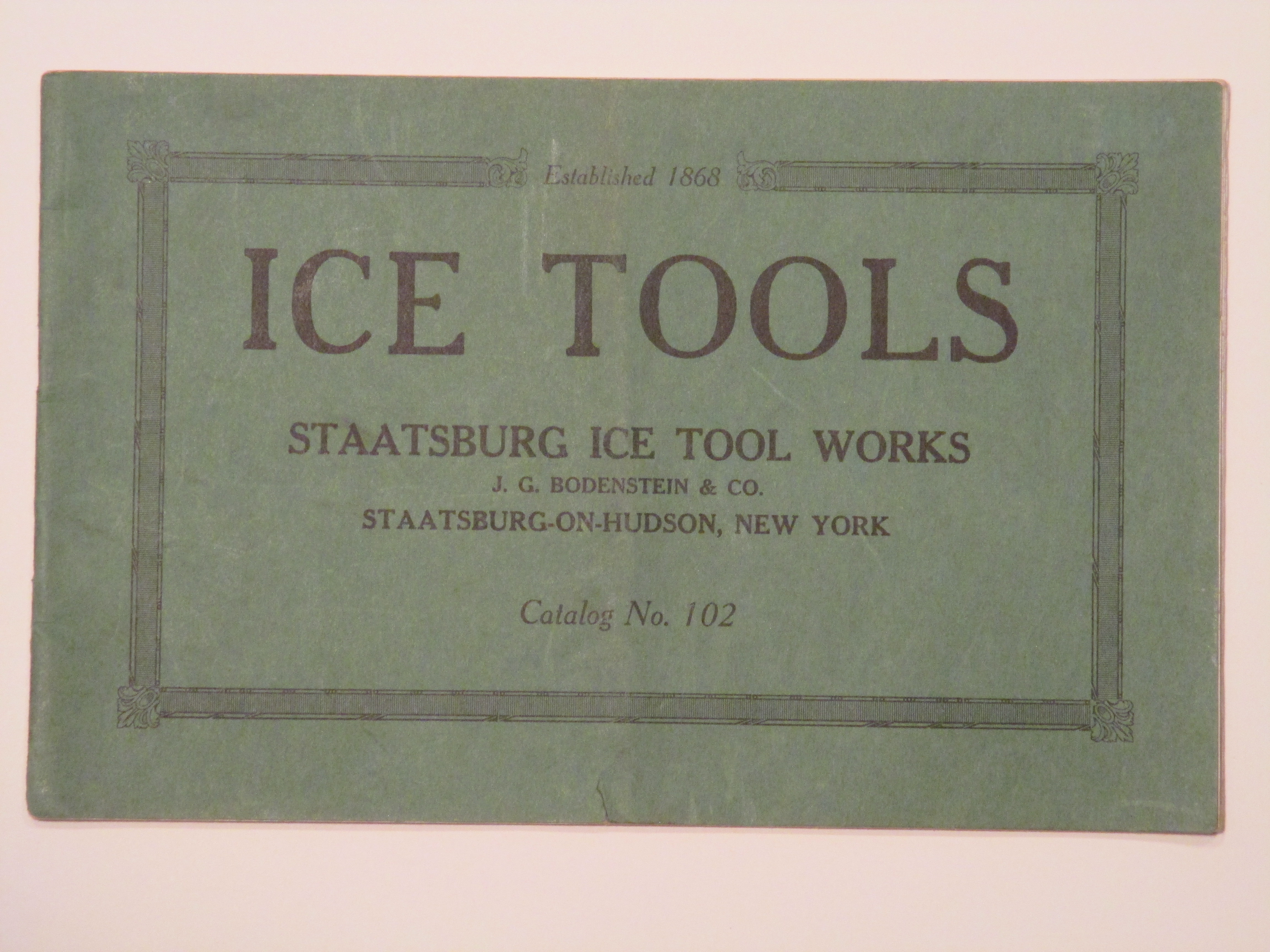I just got this STAATSBURG ice axe.
Total head length = 13 1/2"
Front of eye to blade edge = 7 1/2"
Widest part of blade = 2 3/4"
Handle length = 21"
Total weight is about four pounds.
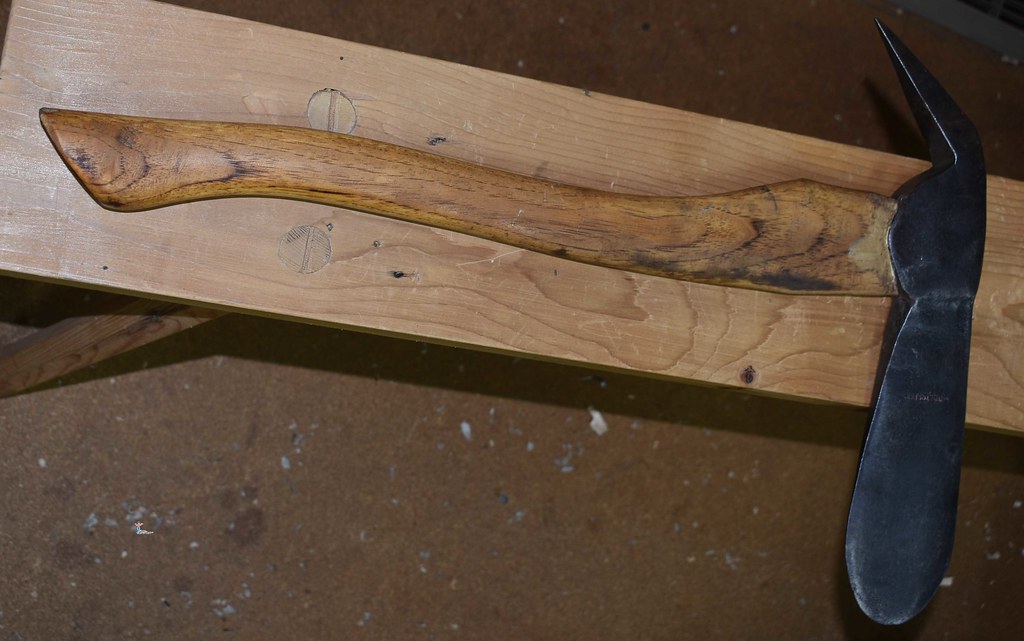
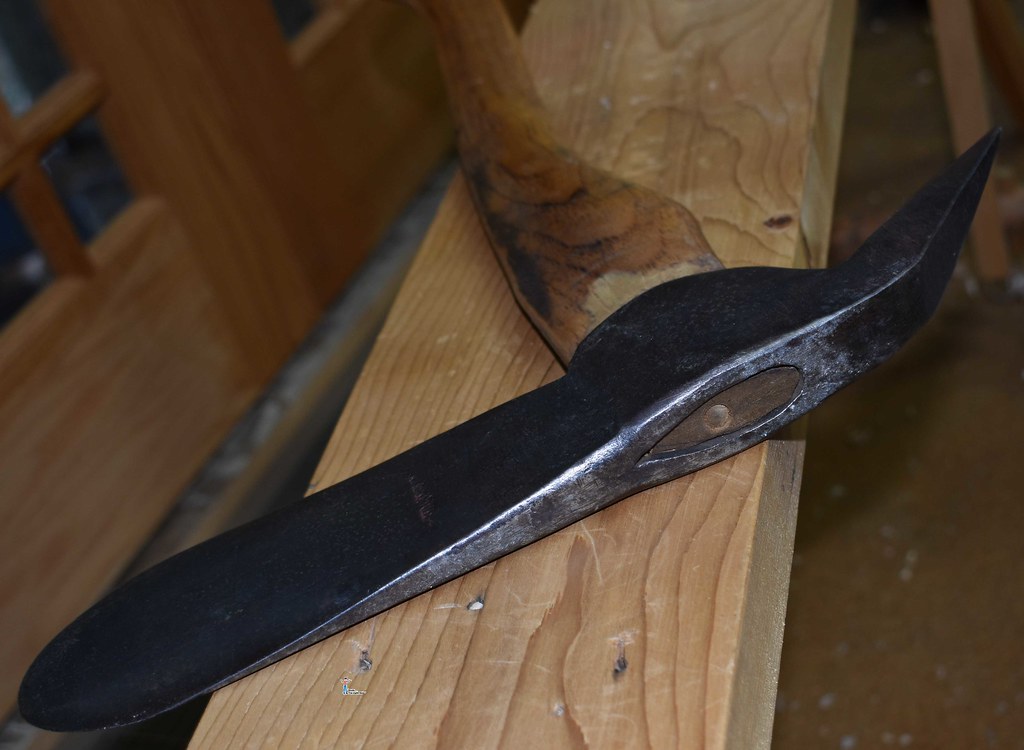
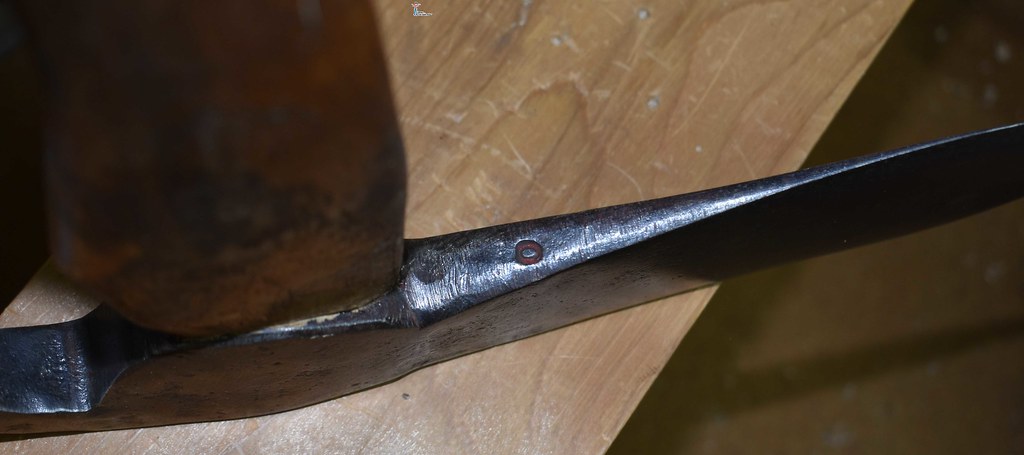
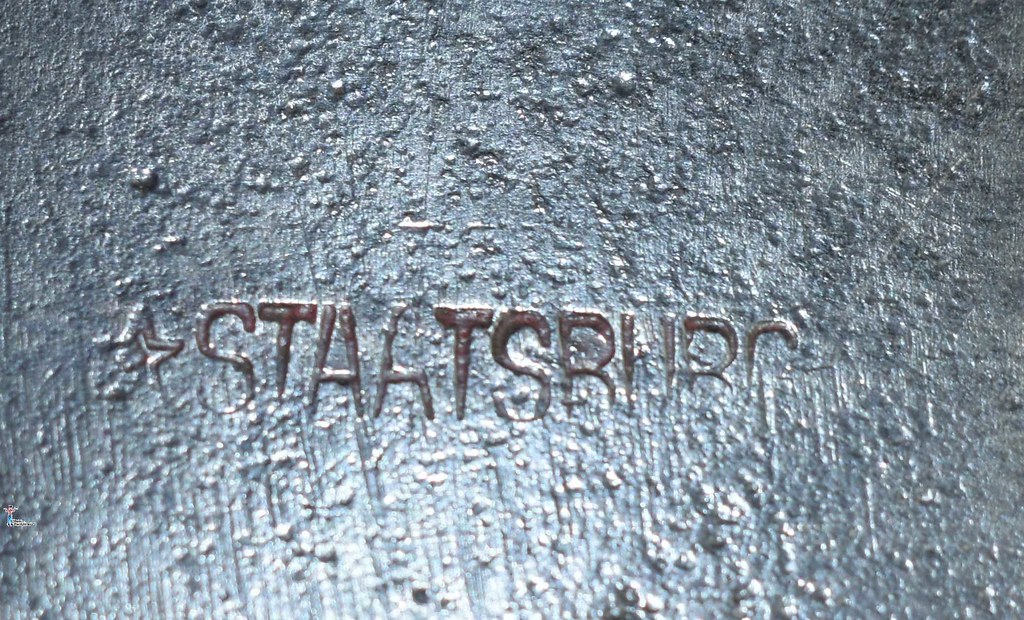
"History of Staatsburg Tool Corp."
"The business that became Staatsburg Tool Corp. was located in the New York village of the same name, on the Hudson River. It was owned and operated by 4 generations of the Bodenstein family. Their specialty was ice tools, but as the demand for those disappeared, they began making cement tools.
"John H. Bodenstein (1823-1875), a native of Germany, made ice tools in Staatsburg from 1858 to 1875. After his death, sons John George Bodenstein (1850-1935) and Henry Bodenstein (c. 1852-1934) ran the business as J.G. Bodenstein & Brother through at least 1892. The partnership was dissolved in the 1890s, and John G. continued as J.G. Bodenstein & Co. In 1920 they were also using Staatsburg Ice Tool Works. By 1936, the name was Staatsburg Tool Corp.
John George Bodenstein Jr. (1884-1965) continued the business until his retirement in 1957, when his nephew George N. Bodenstein (1904-1985) took it over. According to an ad in "Hardware Age" in 1970, Staatsburg Tool Corp made cement and plaster tools and a scaling hammer. The company's buildings and all equipment were sold at auction 14 July, 1984. The last mailing address was in nearby Sharon, CT. The New York corporation was dissolved in 1995."
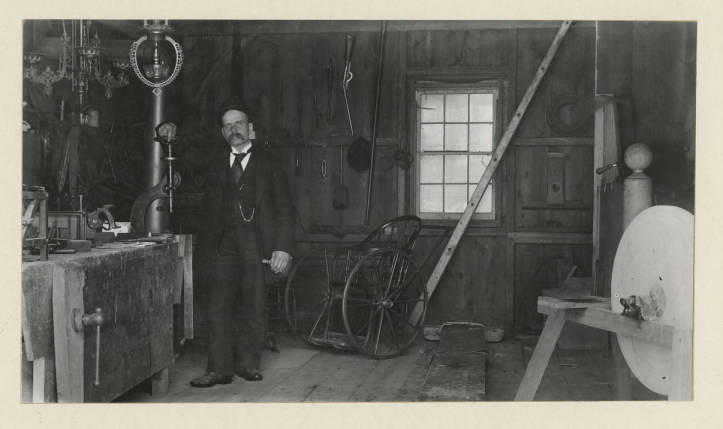
"Employee Cecil Parker, Bodenstein Ice Tool factory, 1890-1900"
http://trowelcollector.blogspot.com/2015/09/history-of-staatsburg-tool-corp.html
Rhinebeck NY Gazette 1977:
"There was wealth in river ice"
"George Bodenstein of Staatsburg knows about ice harvesting, but says even he couldn't hazard a guess as to how many houses there were.
Bodenstein's great-grandfather founded J.G. Bodenstein and Company in Staatsburg in 1868. The company soon changed its name to Staatsburg Ice Tool Works and became, along with Gifford Wood's company in Hudson, the biggest manufacturer of tools for harvesting ice in the Hudson Valley.
The company has stayed in the family ever since, although Bodenstein said it stopped manufacturing ice harvesting implements in 1956 and has changed its name to the Staatsburg Tool Corporation."
http://fultonhistory.com/Newspaper 18/Rhinebeck NY Gazette/Rhinebeck NY Gazette 1977/Rhinebeck NY Gazette 1977 - 0808.pdf
Catalog scans:
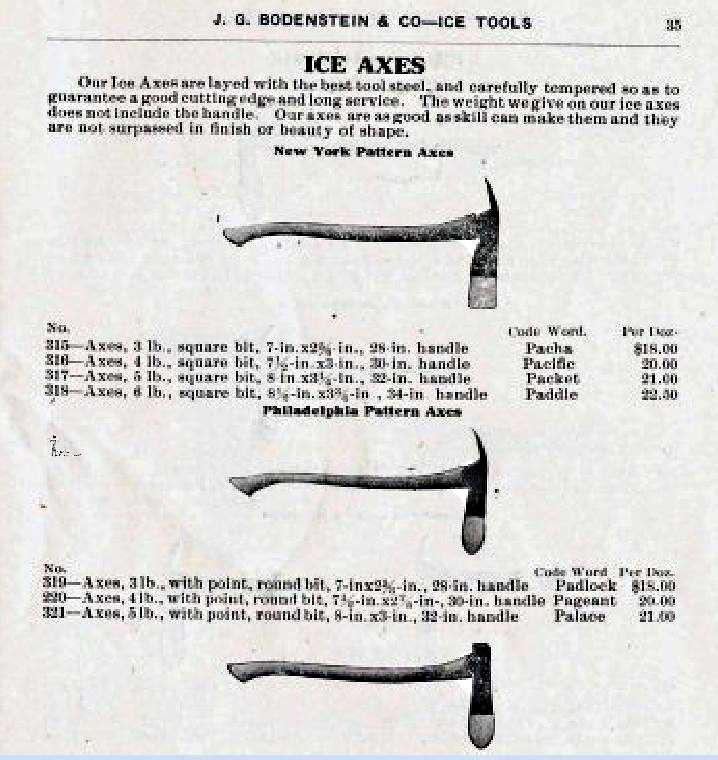

I did not save the source for the above catalog pages. Also, I don't think that there was a date for them.
Bob









